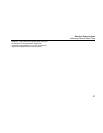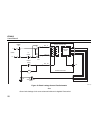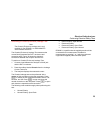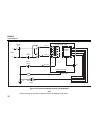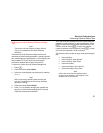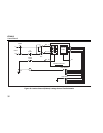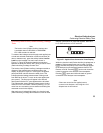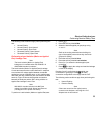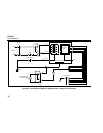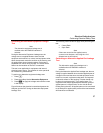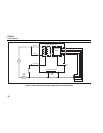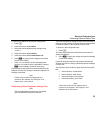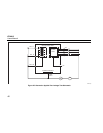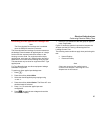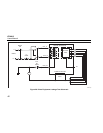
Electrical Safety Analyzer
Performing Electrical Safety Tests
35
The following outlet conditions apply when performing this
test:
• Normal Polarity
• Normal Polarity, Open Neutral
• Normal Polarity, Open Earth
• Reversed Polarity, Open Neutral
• Reversed Polarity, Open Earth
Performing a Lead Isolation (Mains on Applied
Part) Leakage Test
Note
The Lead Isolation (Mains on Applied Part)
leakage test is available when the IEC60601 &
ANSI/AAMI standard is selected.
The Lead Isolation (Mains On Applied Parts) Leakage
Current test measures the current that flows in response
to an isolated AC voltage applied between a selected
applied part, group of applied parts, or ALL applied parts,
and Earth (and any conductive part connected to the RED
terminal). Figure 23 shows the electrical connections
between the Analyzer and the DUT during a Mains on
Applied Part Leakage Current Test.
Note
With 60601 standard selected, the MAP test
voltage is available in both Normal and Reverse
(180 degrees out of phase with mains).
To perform a Lead Isolation (Mains on Applied Part) test:
1. Press B.
2. Press the soft key labeled More.
3. Select the desired applied part groupings using
G and H.
Note
Refer to the testing standard when deciding the
type of the applied parts and how they should be
grouped for testing.
4. Press the soft key labeled Select.
5. Press the soft key labeled Lead Isolation.
6. Press F or E to select the desired applied part
connection.
7. Press T to apply the voltage and read the leakage
current in the display.
Pressing E and F scrolls through the applied part
connections or groupings. Press T for each
connection configuration to thoroughly test the DUT.
The following outlet conditions apply when performing this
test:
• Normal Polarity
• Reverse Polarity
Note
If there are more than five applied parts to
connect to the Analyzer, see Using the 1210
Adapter later in this manual.



